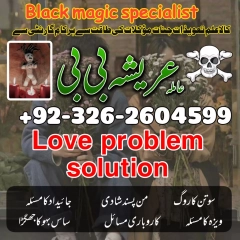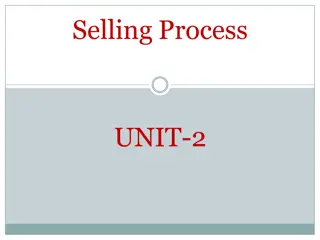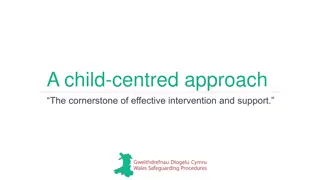Understanding Client Expectations and Aligning with Business Goals
Effective strategies for understanding client/customer expectations and aligning them with business goals are crucial for success in IT-Design projects. By focusing on the client's needs and vision, IT professionals can elevate design value, improve timing and production processes, and aim for comprehensive goals. By utilizing appropriate tools and experience, businesses can meet client expectations efficiently and effectively, leading to successful outcomes.
Download Presentation

Please find below an Image/Link to download the presentation.
The content on the website is provided AS IS for your information and personal use only. It may not be sold, licensed, or shared on other websites without obtaining consent from the author. Download presentation by click this link. If you encounter any issues during the download, it is possible that the publisher has removed the file from their server.
E N D
Presentation Transcript
How to know client/customer expectation? How to make alignment with client goal?
Benefit of Knowing client expectation More Design Value can be elevated Comprehensive in Timing Production Aiming in Goal
Finding Good IT-Design Approach Dr. Yeffry Handoko Putra
Approach to what? Business Goal Selling IT-Design value (esthetics, information (teaching, complete), detail, reproduce ) Customer Expectation Safe, simple, sensible, Message of vision State of the art By Survey and forecasting By survey and discussion
Name of Approach Good Serving Strategic Aligment Customer Expectation Business Goal visioner Vision
How to approach them by IT-Design? Intention Technology , appropriate tools, way to create Sensible Effective and Efficient Acquisition knowledge (survey, discussion) Skill and experience of Human Year by the year
Finding good Technology Approach in IT-Design Project 2013, Wife of Indonesian Embassy riding cab with Indonesia Promo in London
Good Approach Good Serving Good media, good technology, good time,, good information, good legal and good risk management 4 Ps of Service Management People skills, training, communication Processes actions, activities, changes, goals Products tools, monitor, measure, improve Partners specialist suppliers
Governance in IT-Design Value Management Alignment Good Approach Resource Management Risk Management Performance Measurement (Consistence in quality due to size and time)
Resource Management Resource Strategy Features In-sourcing All parts internal Out-sourcing External resources for specific and defined areas (e.g. Contract cleaners) Co-Sourcing Mixture of internal and external resources Knowledge Process Outsourcing (domain-based business expertise) Outsourcing of particular processes, with additional expertise from provider Application Outsourcing External hosting on shared computers applications on demand (e.g. Survey Monkey, Meet-o-matic) Business Process Outsourcing Outsourcing of specific processes e.g. HR, Library Circulation, Payroll Partnership/Multi-sourcing Sharing service provision over the lifecycle with two or more organisations (e.g. Shared IT Corpus/Oriel)
Customer Expectation Need creativity for variant
Service Strategy has four activities Define the Market (Research) Develop the Offerings (Development) Develop Strategic Assets Prepare for Execution (implementation and evaluation)
What Market? What Offering What Strategic Asset? How the execution? Ads on Facebook
http://i.ebayimg.com/00/s/MTYwMFgxNjAw/z/6ckAAOxydlFS7V8A/$_12.JPGhttp://i.ebayimg.com/00/s/MTYwMFgxNjAw/z/6ckAAOxydlFS7V8A/$_12.JPG What Market? What Offering What Strategic Asset? How the execution? Samsung case cover on ebay.com
Service Assets in IT-Design Resources Things you buy or pay for IT Infrastructure, people, money Tangible Assets Capabilities Things you grow Ability to carry out an activity Intangible assets Transform resources into Services LASERCUTLONDON
Your Technology is my Design. Your design in my technology Use IT Resource to produce, enhance and promote Design or Use Design to form IT Function Case in Web Design Developer by Shervonne Cherry, Designer who work in web developer
IT Resource for Designer What s out there for Designers Internet Social Media Application Mobile
Adding nerd to Design Process Research Design & Development Implementation Evaluation
Research Google is your friend Add Google- it allows to explore words & concepts endlessly Protect from getting in a trademark dilemma Check if someone has already created the idea that just popped in your head
Design and Development Think about the bigger picture Think Scalable Designers change their minds often but not as much as our clients do Reduced cost & effort (Demand Management) Will this fit with the current web, Mobile or Tech trends relevant to project/client
Demand Management Ensures we don t waste money with excess capacity Ensures we have enough capacity to meet demand at agreed quality Patterns of Business Activity to be considered E.g. Economy 7 electricity, Congestion Charging
Service Design How are we going to provide it? How are we going to build it? How are we going to test it? How are we going to deploy it? Holistic approach to determine the impact of change introduction on the existing services and management processes
Processes in Service Design Availability Management Capacity Management Disaster recovery Supplier Management Service Level Management Information Security Management
Service Level Management Service Level Agreement Operational Level Agreements Internal Underpinning Contracts External Organisation Supplier Management Can be an annexe to a contract Should be clear and fair and written in easy-to-understand, unambiguous language Success of SLM (KPIs) How many services have SLAs? How does the number of breaches of SLA change over time (we hope it reduces!)?
Things you might find in an SLA Service Description Hours of operation User Response times Incident Response times Availability & Continuity targets Resolution times Critical operational periods Change Response Times Customer Responsibilities
Types of SLA Service-based All customers get same deal for same services Customer-based Different customers get different deal (and different cost) Multi-level These involve corporate, customer and service levels and avoid repetition
Right Capacity, Right Time, Right Cost! This is capacity management Balances Cost against Capacity so minimises costs while maintaining quality of service























